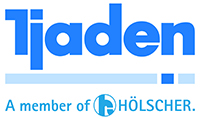Research and development
Research and Development
PFAS is high on the agenda of public bodies and companies in Europe.
Recently, several European countries joined forces to set up a legislation, which will (almost completely) ban the use and market of PFAS in Europe by 2025.
In addition, by 2027, the strict Annual Average Environmental Quality Standards (AA-EQS) under the Water Framework Directive will come into force, which will only allow very stringent levels (for example, 0,65 ng/L for PFOS) of PFAS in surface waters. This will, of course, have its effect on local discharges.
In the Netherlands, legislations for the reuse of soil have become effective. Indicative threshold levels for remediation have also been published.
The legislative framework exists in the Netherlands, but corrective measures are not frequently implemented (soil or groundwater remediation and wastewater treatment). Also, redevelopment projects are still faced with difficulties in their soil management, which, in most cases, lead to higher costs.
In the US and Australia, the situation is quite different. Legislations and legal cases have led to a change in liability management. With this, the number of projects related to PFAS (investigation and corrective measures) increased tremendously in both countries.
This demand for solution is a boost for R&D work. Governmental organizations in the US are providing funds specifically on PFAS treatment technologies. Service providers also invest in R&D in order to maintain their market position.
In the last decade, Arcadis has shown Thought Leadership on PFAS. We co-developed new procedures for sampling and analysis. We are also continually seeking cooperation with innovative service providers and will test new technologies on their efficiency. Our PCTS partners Boskalis Environmental, Hoelscher Wasserbau & Tjaden and Kenbri Fire Fighting share this perspective.
What are the present developments that could be of value to your organization?
- Groundwater treatment
- Use of innovative absorbents and adsorbents
- Increase the efficacy of treatment using activated carbon
- (Waste)water treatment
- Ozofractionation
- Sonolysis
- Electro-coagulation
- System clean out (mobile and static fire suppression systems)
- Development and use of a clean out procedure using the Arcadis V0171 cleaning solvent
- Soil treatment
- Improving efficacy and working range for soil washing
- Reduce leaching properties
-
- PFAS Cleaning Treatment Solutions
- PFAS Cleaning Treatment Solutions
-
- info@pfasoplossingen.nl
-
- Phone number
- +31(0)646647255




